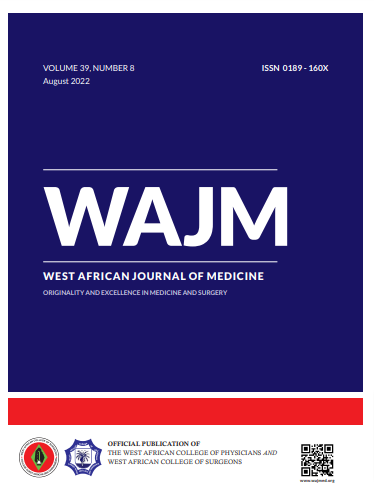ORIGINAL: Fatal Spontaneous Subarachnoid Haemorrhage- A Report of Three Unusual Causes
West Afr J Med . 2022 Aug 31;39(8):781-787.
Keywords:
Anomalous Vessels; Arterial fenestration; Arteriovenous fistulas; Fusiform aneurysms; Subarachnoid haemorrhage.Abstract
Purpose: To report three rare causes of fatal spontaneous subarachnoid haemorrhage (SAH) and to discuss the clinical presentations, neuroimaging findings of the patients, and a brief review of the literature on these unusual causes of SAH.
Case reports: Anomalous branches of the internal carotid artery (ICA) are remarkably rare and multiple aneurysms associated with these aberrant arteries a rarer phenomenon still. A case of multiple proximal and distal aneurysms of the main trunk of an aberrant ICA branch, which resulted in a World Federation of Neurosurgical Societies (WFNS) grade V SAH, was presented. This abnormal vessel had an arterial fenestration, another rare occurrence. The second patient had a craniocervical junction (CCJ) arteriovenous fistula, which was associated with a distal aneurysm extending to the upper cervical spinal canal. The patient presented with recurrent SAH which had been misdiagnosed multiple times in the past. The third case presentation is that of a WFNS grade IV SAH, which occurred secondary to a ruptured giant fusiform aneurysm of the supraclinoid segment of the left ICA. The first two cases manifested with multiple episodes of Fisher grade IV SAH, and all cases proved fatal.
Conclusion: It is crucial for clinicians to ensure prompt angiographic studies in patients presenting with spontaneous subarachnoid haemorrrhage, as delay in the definitive diagnosis/intervention can be lethal. In particular, a high index of suspicion for a vascular brain lesion should be entertained in cases of repetitive SAH.
Keywords: Anomalous Vessels; Arterial fenestration; Arteriovenous fistulas; Fusiform aneurysms; Subarachnoid haemorrhage.


